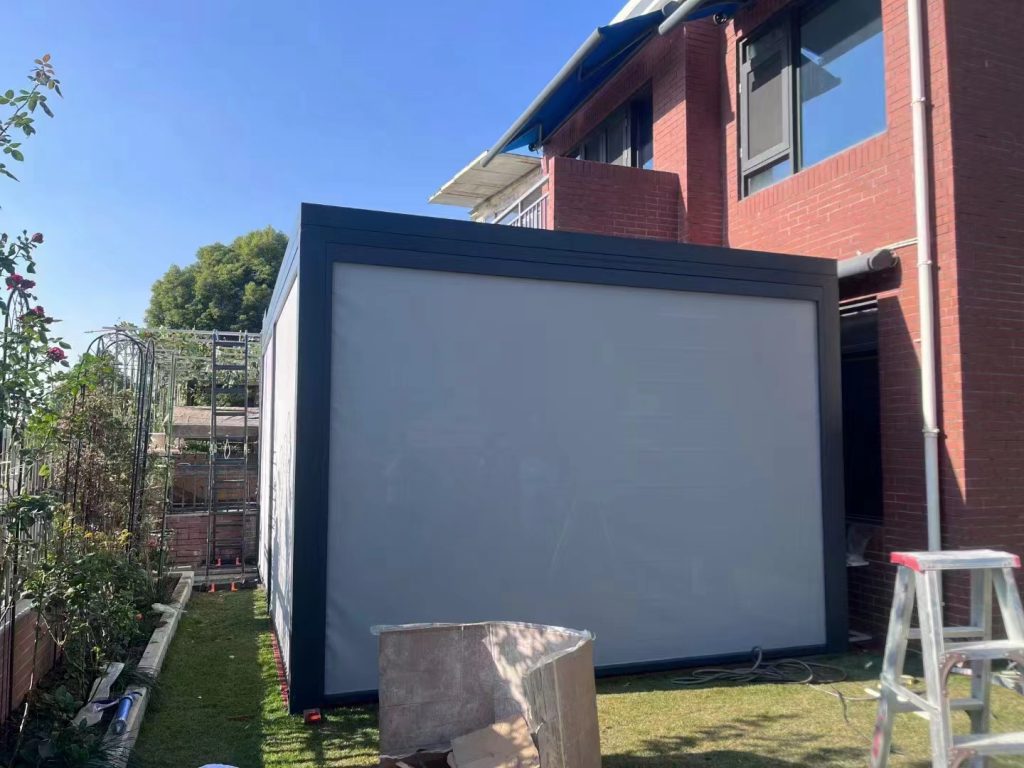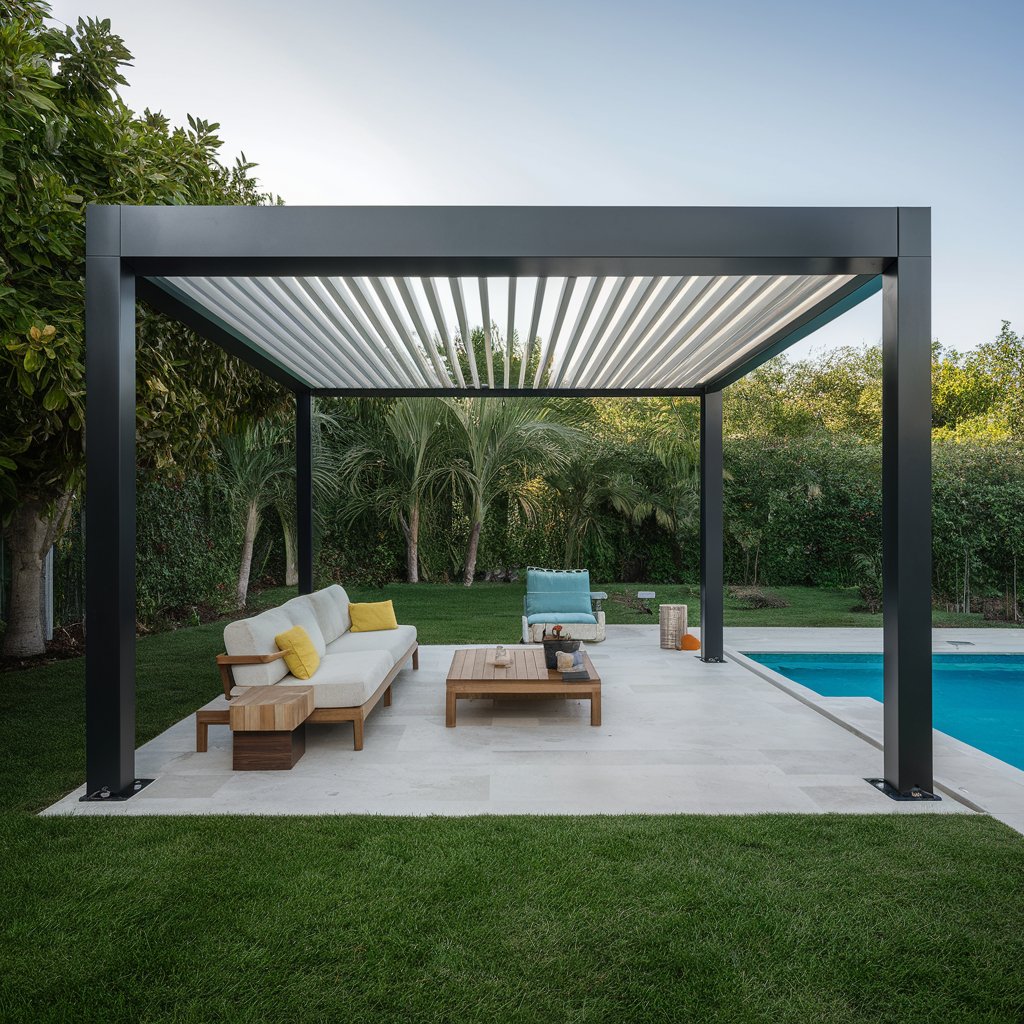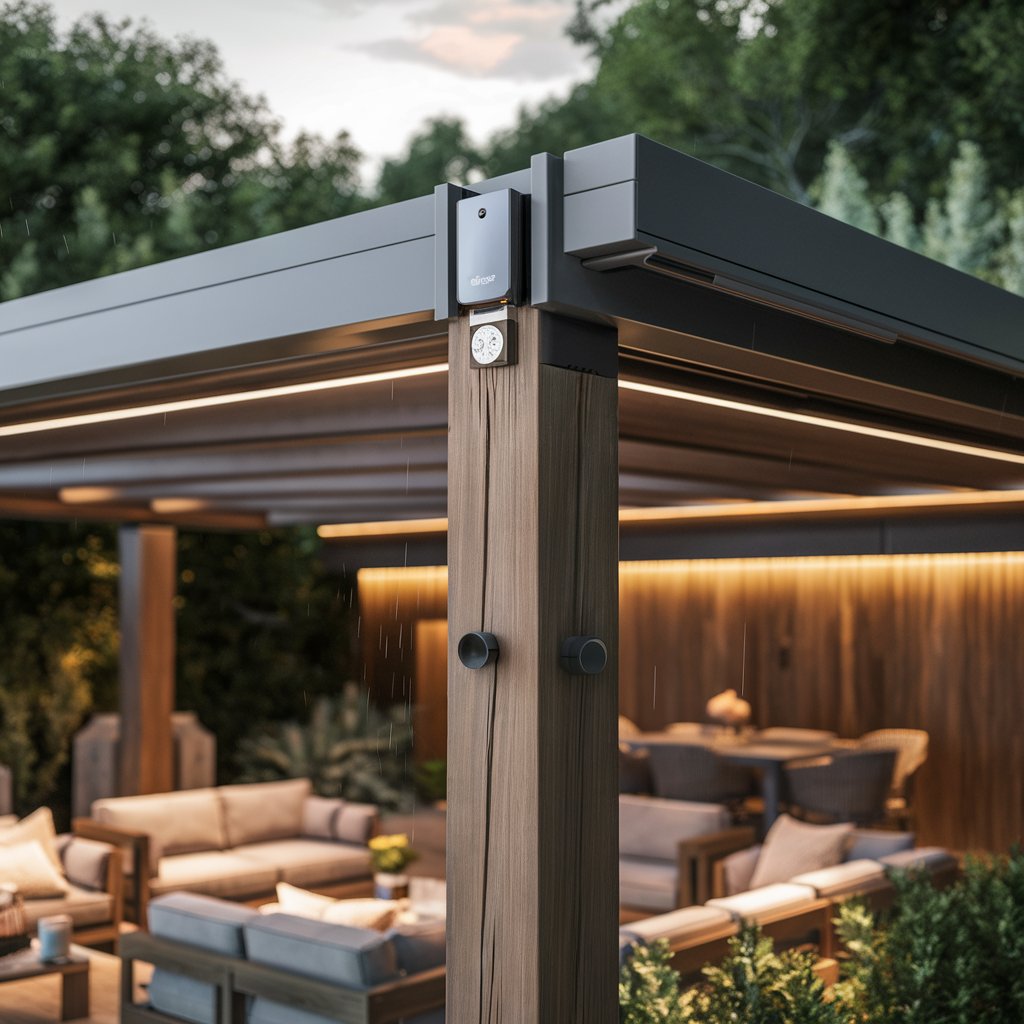Creating and maintaining privacy in a pergola is not just about blocking views—it’s about enhancing comfort, creating a serene atmosphere, and integrating seamlessly with your outdoor space. This comprehensive guide will explore various strategies and techniques to achieve privacy in your pergola effectively. From design considerations to practical implementation and maintenance tips, we’ll cover everything you need to know to transform your pergola into a private sanctuary.

Introduction to Privacy in Pergolas
Pergolas are versatile outdoor structures that blend functionality with aesthetic appeal. Traditionally, they feature open sides and roofs supported by vertical posts, providing partial shade and a framework for climbing plants. However, achieving privacy in a pergola requires thoughtful planning and the incorporation of specific design elements and features.
Privacy in pergolas can serve multiple purposes:
- Seclusion: Creating a secluded area for relaxation, dining, or socializing away from prying eyes.
- Protection: Shielding from wind, sunlight, or other environmental elements without sacrificing outdoor enjoyment.
- Enhanced Ambiance: Enhancing the ambiance of the outdoor space by creating a cozy, intimate atmosphere.
- Aesthetic Appeal: Adding architectural interest and complementing the overall design of your home and landscape.
Design Considerations for Privacy in Pergolas
1. Location and Orientation
Choosing the right location for your pergola is crucial for maximizing privacy. Consider the following factors:
- Distance from Neighbors: Position the pergola away from neighboring properties to minimize direct sightlines.
- Natural Barriers: Utilize existing trees, shrubs, or fences to create a natural buffer zone around the pergola.
- Sun Exposure: Take into account the sun’s path throughout the day to optimize shade and comfort.
2. Structural Design
The design of your pergola plays a significant role in achieving privacy:
- Solid Roof Panels: Opt for pergolas with solid roof panels to provide overhead coverage and enhance privacy. Materials such as wood, aluminum, or polycarbonate offer durability and weather resistance.
- Adjustable Louvers: Consider pergolas with adjustable louvers or slats that can be tilted to control sunlight and visibility. This flexibility allows you to adapt to changing weather conditions and privacy needs.
- Retractable Shades or Curtains: Install retractable shades or curtains that can be drawn closed for privacy and opened to enjoy natural light and ventilation. Choose weather-resistant fabrics for longevity.
3. Privacy Enhancing Elements
Incorporate specific features into your pergola design to enhance privacy:
- Privacy Screens: Install fixed or movable privacy screens made from materials such as wood, vinyl, or metal. These screens can be customized in height and placement to block views from specific angles.
- Lattice Panels: Use lattice panels or trellises combined with climbing plants to create a natural privacy screen. Plants like ivy, jasmine, or bougainvillea provide additional coverage and seasonal beauty.
- Furniture Layout: Arrange outdoor furniture strategically within the pergola to maximize privacy. Position seating areas away from direct sightlines and facing inward towards the center of the pergola.
4. Materials and Finishes
Choose materials and finishes that complement your home’s exterior and landscape:
- Wood: Provides a natural, rustic look and can be stained or painted to match your existing decor. Requires regular maintenance to preserve its appearance and durability.
- Metal (Aluminum, Steel): Offers durability and minimal maintenance requirements. Aluminum, in particular, is lightweight and resistant to rust and corrosion, making it suitable for outdoor use.
- Vinyl or Composite Materials: Low-maintenance options that mimic the look of wood without the upkeep. Resistant to moisture, fading, and insect damage.
5. Landscaping Integration
Integrate landscaping elements around the pergola to enhance privacy and aesthetics:
- Potted Plants: Use large potted plants or planter boxes filled with tall grasses, bamboo, or flowering plants to create movable privacy screens.
- Greenery: Plant hedges, bushes, or trees strategically around the pergola to create a natural barrier and enhance privacy throughout the year.
Installation and Construction of Privacy Features
1. Site Preparation
Prepare the pergola site by clearing vegetation, leveling the ground, and ensuring adequate drainage:
- Foundation: Depending on the pergola type, install a suitable foundation such as concrete footings, anchored posts, or surface-mounted bases.
2. Assembling the Pergola Structure
Follow manufacturer instructions to assemble the pergola structure:
- Posts and Beams: Secure posts into the ground or onto the foundation. Attach beams and rafters according to the design specifications.
- Roof Panels or Coverings: Install solid roof panels, adjustable louvers, or fabric shades based on your privacy and shade requirements.
3. Adding Privacy Enhancements
Incorporate privacy-enhancing features into the pergola structure:
- Screens and Panels: Attach privacy screens, lattice panels, or trellises to the sides of the pergola. Ensure they are securely fastened and provide the desired level of privacy.
- Curtains or Shades: Install curtain rods or tracks for retractable curtains or shades. Choose fabrics that complement your outdoor decor and withstand outdoor conditions.
Maintenance and Care for Privacy in Pergolas
Maintaining privacy features ensures longevity and optimal performance:
- Regular Cleaning: Clean screens, panels, and fabric curtains regularly to remove dirt, dust, and debris. Use a mild soap solution and water, and rinse thoroughly.
- Inspect and Repair: Periodically inspect privacy screens, panels, and hardware for signs of wear, damage, or corrosion. Replace damaged components and tighten loose fasteners as needed.
- Seasonal Upkeep: Prepare the pergola for changing seasons by trimming plants, removing debris, and applying protective coatings or treatments to wood or metal surfaces.
- Furniture and Accessories: Maintain outdoor furniture and accessories within the pergola. Clean cushions, pillows, and rugs regularly, and store them indoors during inclement weather.
Practical Applications and Benefits of Privacy in Pergolas
1. Residential Settings
Enhance outdoor living spaces with privacy pergolas:
- Outdoor Dining: Create an intimate dining area shielded from neighboring views.
- Relaxation Areas: Design cozy seating areas for reading, lounging, or enjoying nature in private.
- Entertainment Spaces: Host gatherings and social events without sacrificing privacy or comfort.
2. Commercial and Public Spaces
Utilize pergolas in commercial settings for added privacy and functionality:
- Restaurants and Cafes: Create secluded dining spaces for patrons to enjoy meals outdoors.
- Hotels and Resorts: Enhance guest experience with private lounging areas around pools or gardens.
- Corporate Offices: Provide employees with outdoor meeting spaces or relaxation areas away from public view.
Conclusion
Achieving privacy in your pergola involves thoughtful planning, strategic design choices, and the integration of privacy-enhancing features that align with your outdoor lifestyle and aesthetic preferences. Whether you’re creating a secluded retreat in your backyard or enhancing the functionality of a commercial property, understanding the design considerations, installation process, and maintenance requirements is essential.
By incorporating these strategies and techniques, you can transform your pergola into a private sanctuary that enhances comfort, ambiance, and enjoyment of outdoor living spaces. Whether you prefer natural greenery, elegant screens, or adjustable shading options, there are countless ways to personalize your pergola to suit your privacy needs and create a relaxing outdoor oasis.


